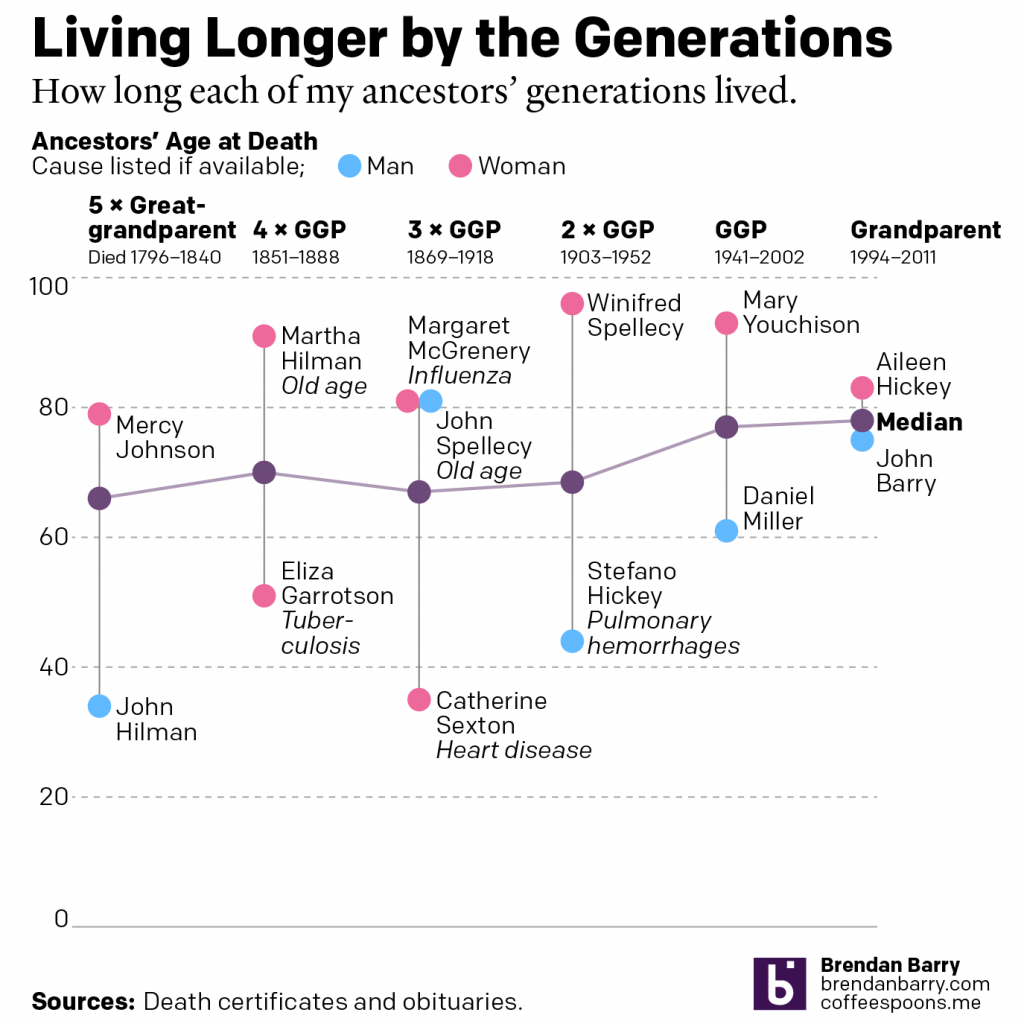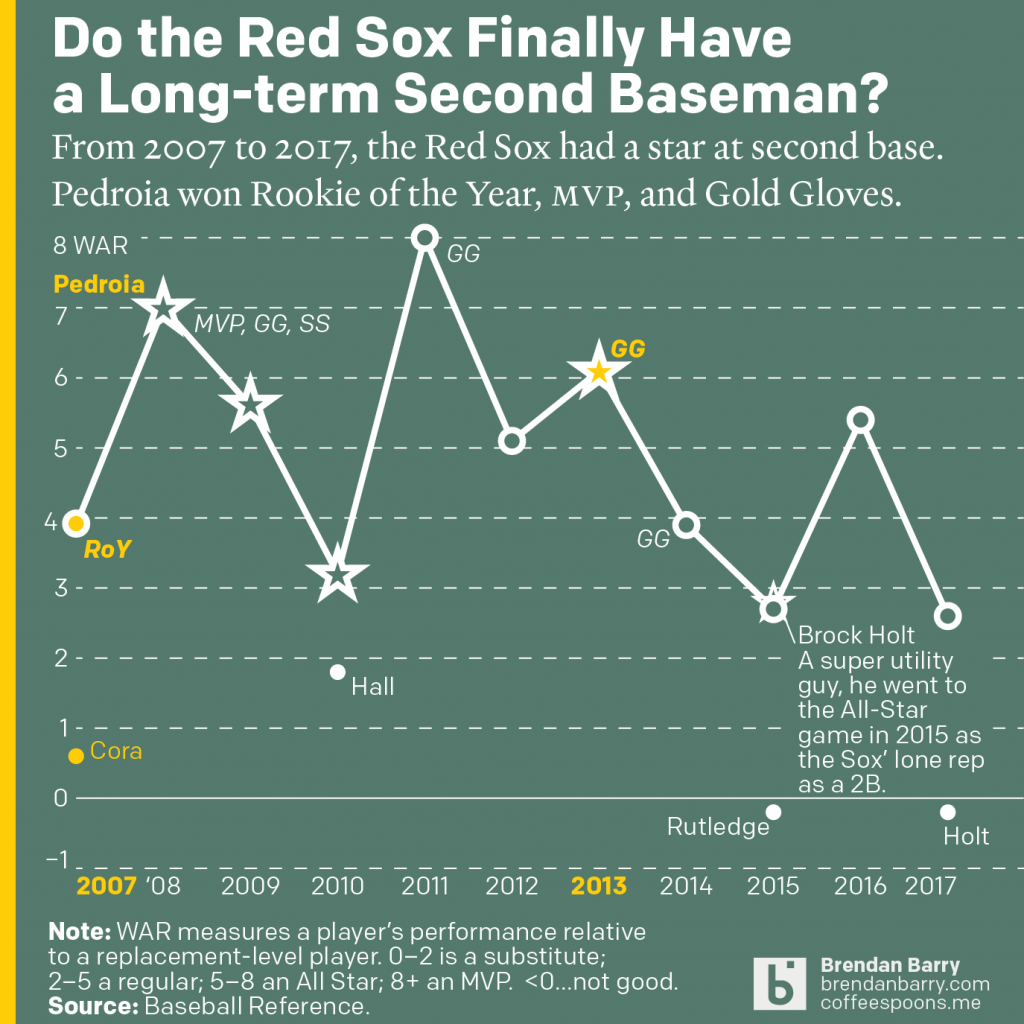Back in March I posted my predictions for the 2025 Boston Red Sox on my social media feeds. I chose not to post it here, because the images had no real data visualisation and the only real information graphic was my prediction of the playoffs via a bracket. I did, however, write about how the Sox may have found their second baseman of the future in Kristian Campbell.
That prediction looks not so hot. The Sox optioned/demoted Campbell to the minor leagues in June and he has not been seen in Boston since. I still think the kid has long-term potential with his bat, but his globe worries me. It never really came around as I hoped.
But what about all my other predictions for the 2025 Red Sox and baseball more broadly?
Well, since today is Day One of the Postseason, I have nothing to report other than that my prediction of a Red Sox–Phillies World Series wherein Boston wins remains possible. Though the bracket itself, not so much. And as for the awards, we still have to wait and see on those too. The rest of the graphics, which had my predictions for select players and statistics, well, those we can look at here today.
We can start with the divisional standings.
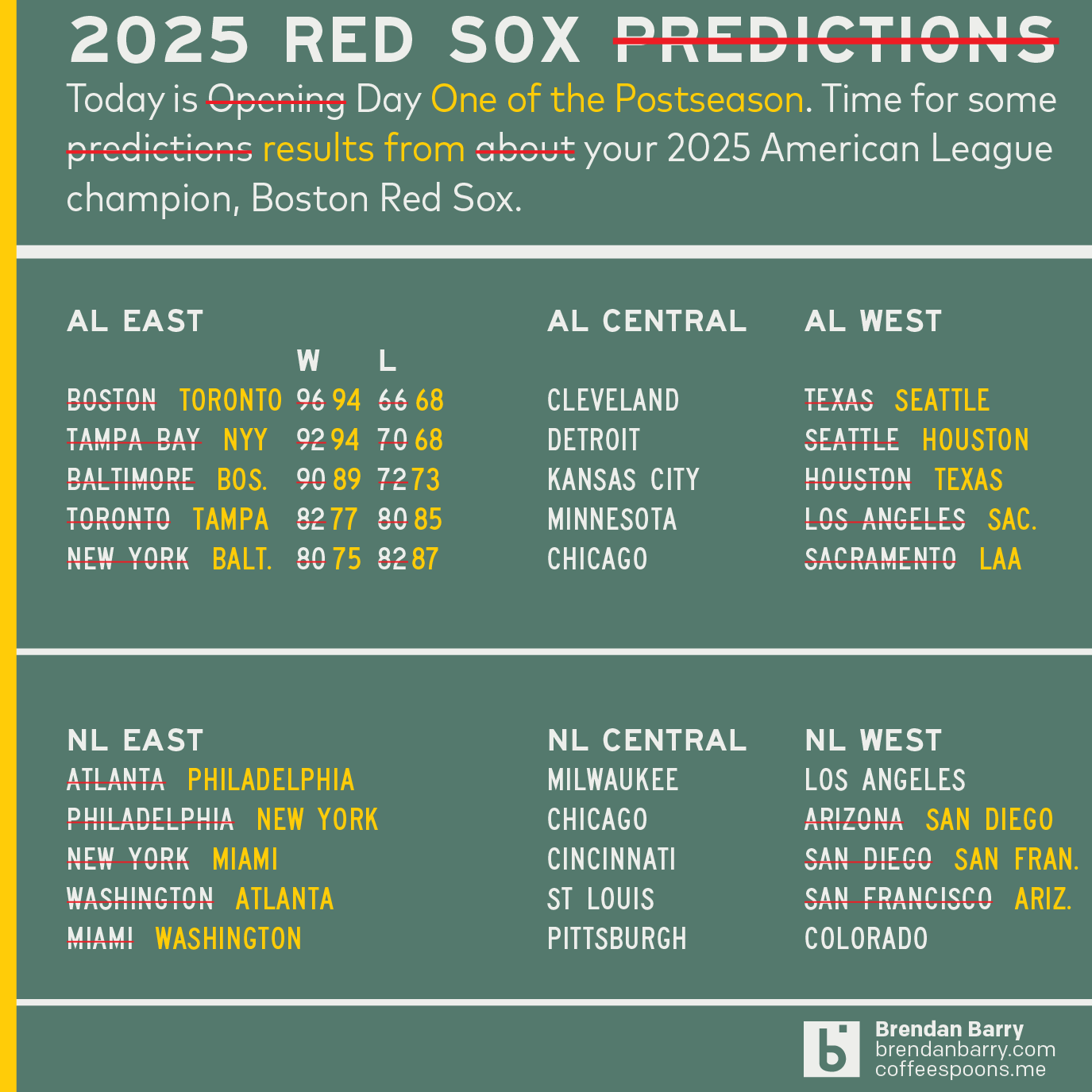
The AL East turned out pretty differently than I thought it would. Baltimore’s young prospects did not have a great year and their rotation was even worse than I thought it would be—and that was not very good, I just thought their young bats would make up the difference.
Similarly, I thought the Yankees would fail to survive some bad injuries to start the year. Unfortunately they did and they host the Red Sox this evening in the Wild Card series.
Toronto finally put it all together after years of failing to do so and Tampa Bay did the opposite, had a bad year where everything fell apart after years of finding a way to put it all together.
In the NL East, the Braves just got hurt and never recovered. But that they were worse than even the Marlins in Miami surprised me. Without Atlanta atop the division, the Phillies and Mets made sense and in that micro-ranking I was spot on.
The West Coast divisions were similarly jumbled. I really thought Texas would dominate, but injuries and poor performances crippled their year. I had thought Houston lost too many big pieces from their roster to remain competitive. And in that I was largely correct as they sputtered out in the final week. As for the Angels and Athletics, the less said about them the better.
The NL West largely went as I expected. The Dodgers did not really dominate the way I and many others expected them to, but they performed well enough to win the division. I thought Arizona, San Diego, and San Francisco would slug it out all year and they largely did, though San Francisco was a bit more disappointing than I thought. And the Rockies were just bad.
As for the two central divisions, what can I say? No notes.
Ultimately I thought Boston would be a better than they were at year’s end. Though they dealt with serious injuries all year and the kids were forced to come up and reinforce the roster a bit too soon then they too all got hurt.
So let us start with the hitters.
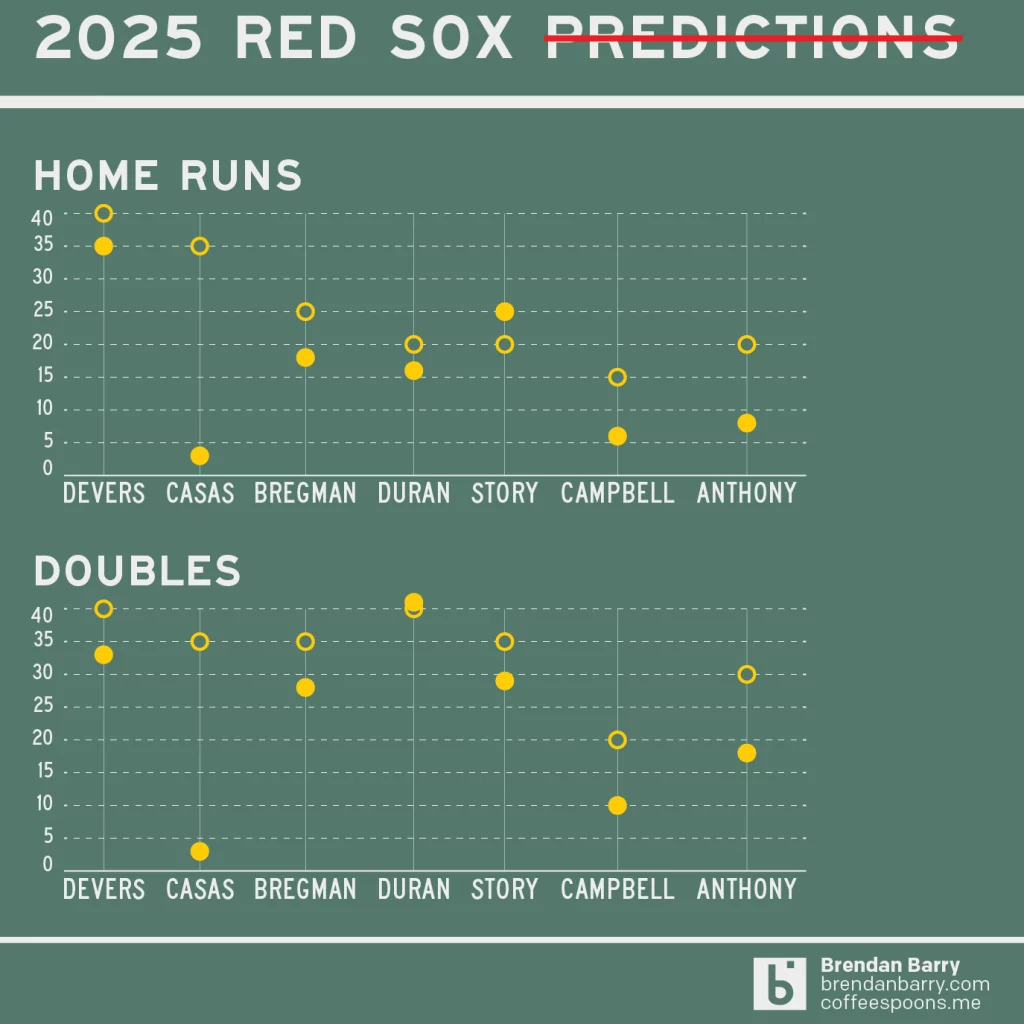
The big, glaring, obvious point here is that in the middle of the season, the Boston Red Sox traded away their best player, at least their best hitter, in Rafael Devers. I thought then it was a stupid move. I think now it was a stupid move. In a few years, if I were a betting man, I would bet I still think it a stupid move. Boy did they really miss his bat in this lineup, especially when Roman Anthony, one of the aforementioned kids, went down with a month and a half left to play in the season.
Triston Casas fully ruptured his patellar tendon before he even played 30 games when I and many others counted on him to be our slugging first baseman. Instead of 35 home runs, he hit only 3.
Alex Bregman was hurt for about two months and Trevor Story was ice cold for about the same. Campbell was demoted like I said and Roman Anthony’s callup was later than I thought it would be and then he got hurt. Only Duran really performed as I expected.
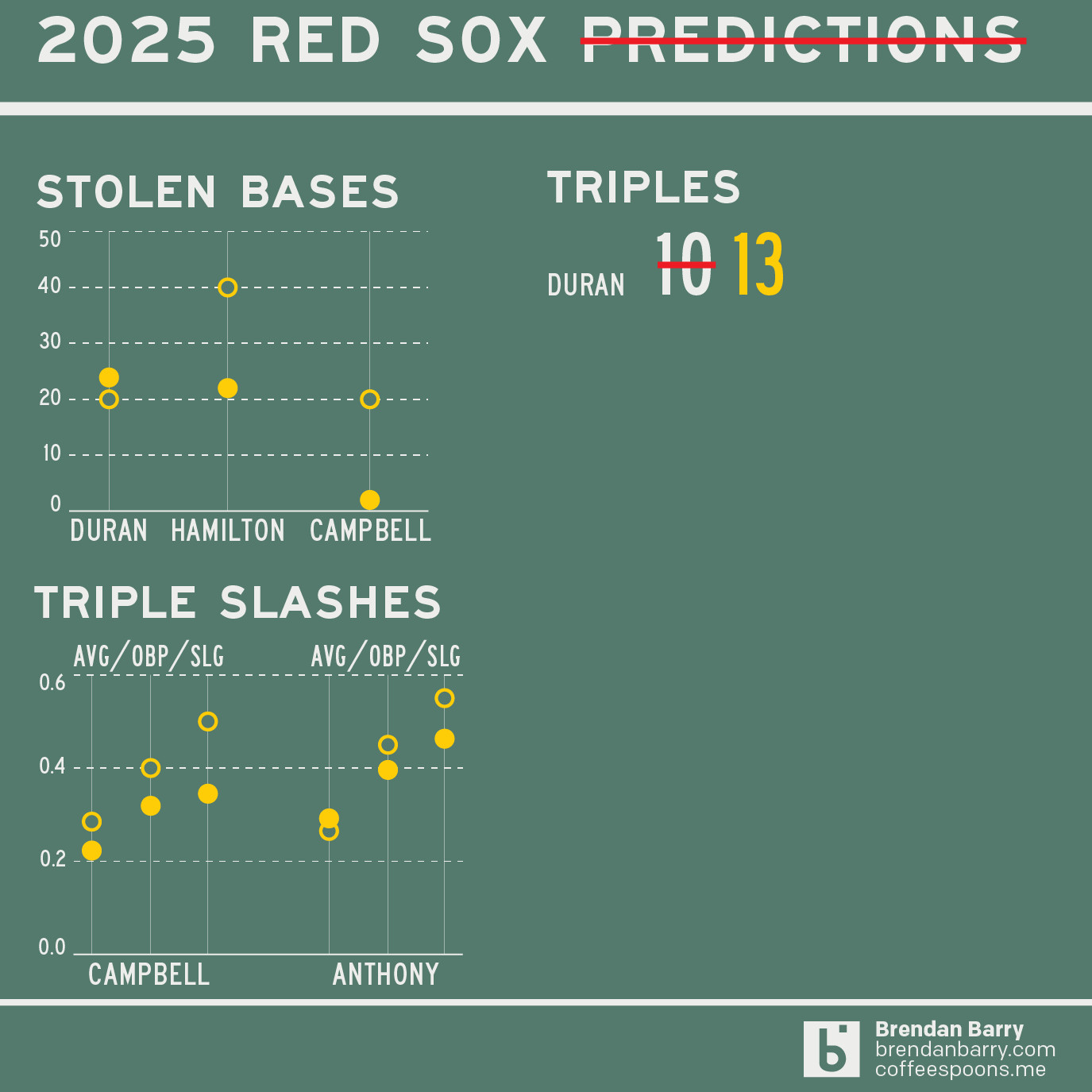
The team also started the year running and being aggressive on the base paths, but that stopped during the summer. David Hamilton had an awful season and through the middle months was playing in AAA, only returning to the major league club because of the injuries ripping through Boston’s roster.
As for the two rookies I thought would play. most of the year, Campbell’s triple slash fell short of my predictions. Hence his demotion. Roman Anthony’s bat exceeded my expectations, though he was hitting more grounders and ground ball singles than I would have hoped, leading to a lower slugging percentage.
Finally we have the pitching.
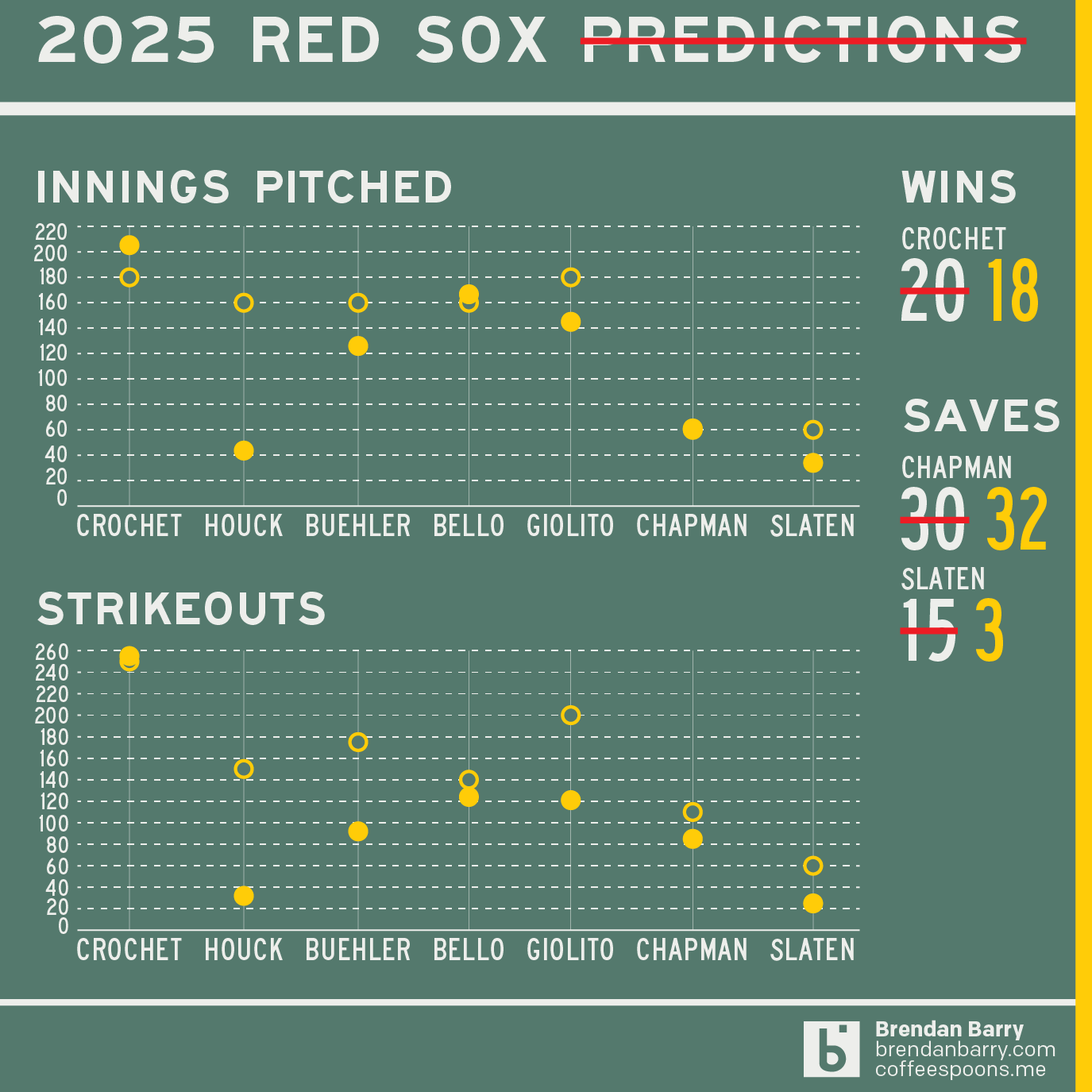
Good lord did things go horribly awry.
Houck was bad then blew out his elbow and had Tommy John surgery, meaning he missed 2/3 of this season and will miss all of next year.
I never wanted Buehler, but thought he would be even more serviceable than he turned out to be. He was just awful. Of the expected rotation, that left just three guys: Garrett Crochet, Brayan Bello, and Lucas Giolito.
Crochet was as advertised, a true ace. He led the American League in innings pitched and all of baseball in strikeouts. He dominated. Period. Bello started the year injured as did Giolito, so whislt Bello did eventually hit the innings I expected him to, Giolito did not. Nor did either player reach the strikeout totals I thought they would, though with Bello that may be more due to a change in approach. It seemed as if last year the Sox wanted him to be a strikeout guy. He has shown flashes of it in the past. But this year he really seemed to buy into the ground ball and weak contact guy.
Then in the bullpen and in the ninth inning Aroldis Chapman was just as dominant as Crochet was at the start. Unfortunately, Justin Slaten had some elbow issues with some kind of a bone spur and he missed significant time. Though in his limited innings he looked as dominant as I hoped. Fortunately he just came back in time for the playoffs.
All in all, a good year for the Red Sox.
As for what happens next, well this time I will leave you with my playoff predictions, though I have edited them to actually include the teams that really did make them.
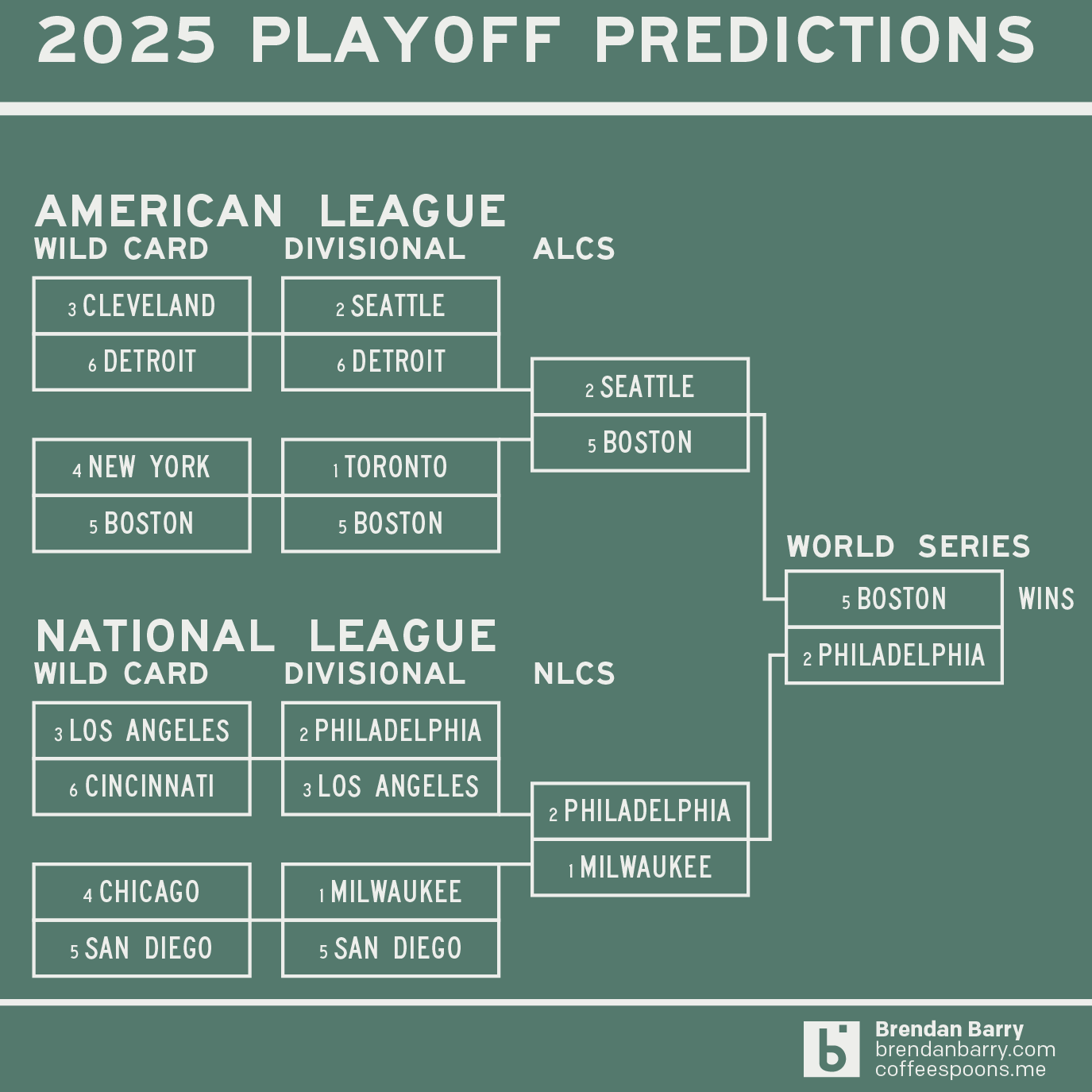
Let’s go Red Sox.
Credit for the pieces is mine.



